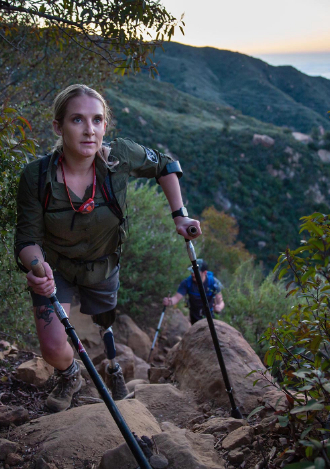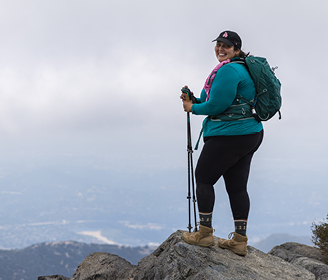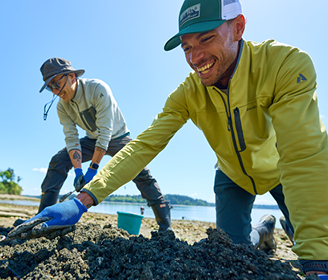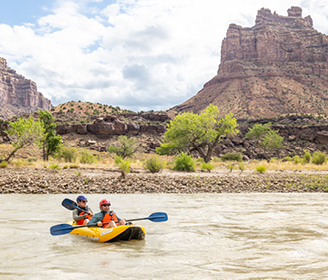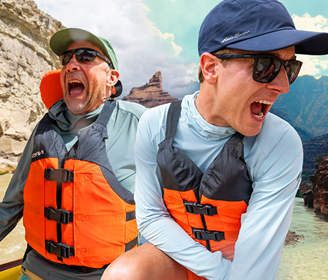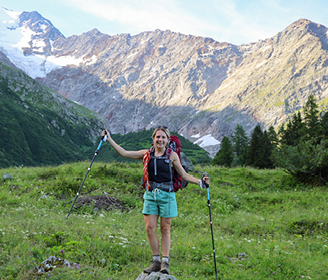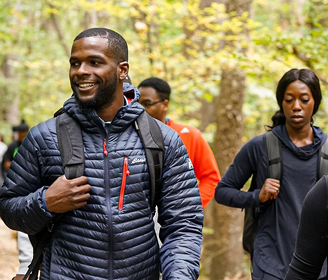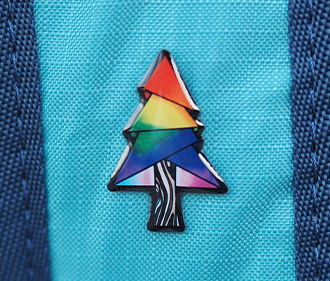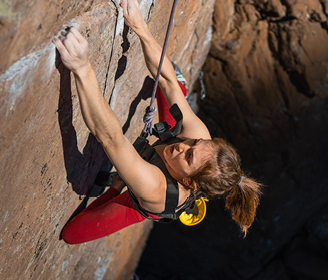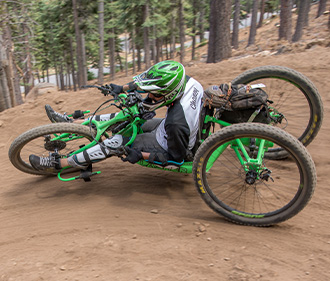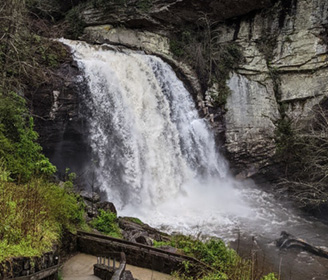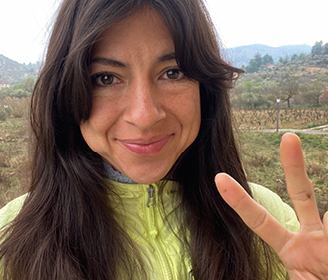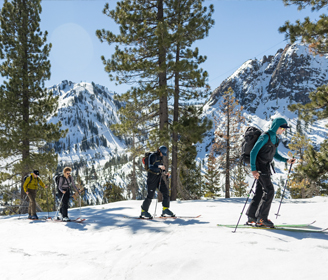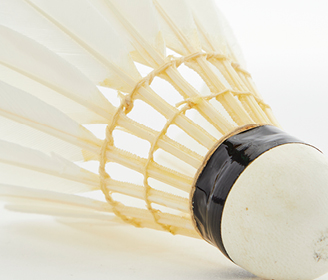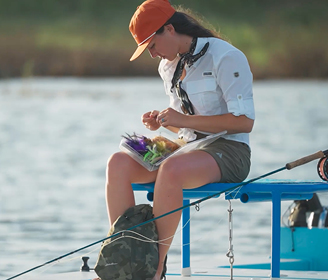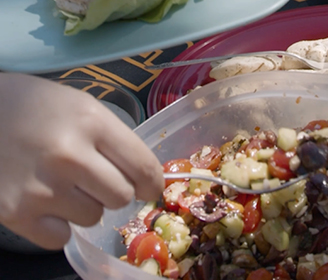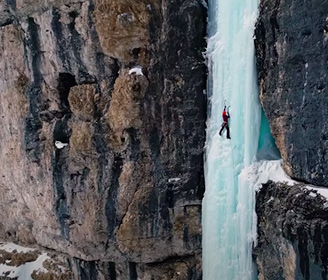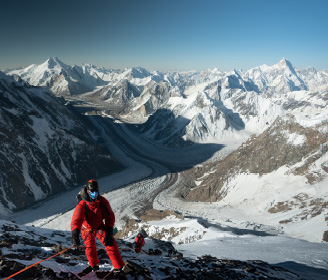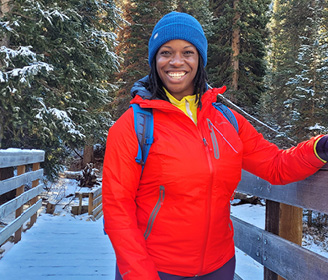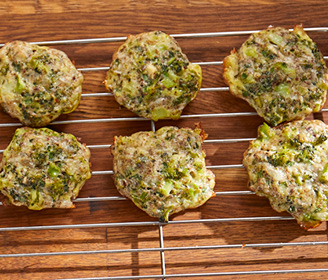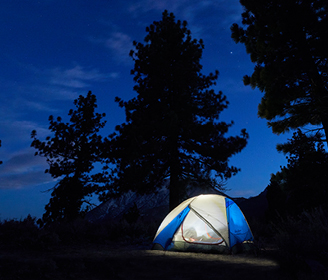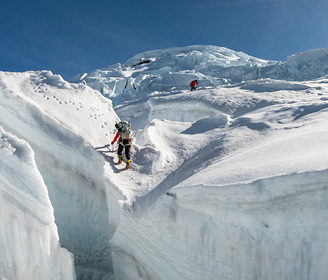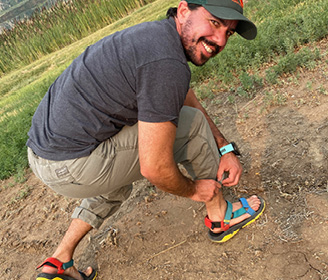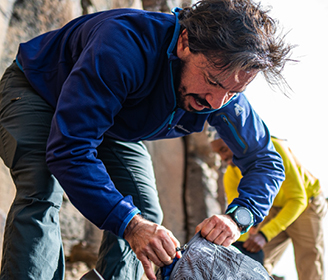When we approached four Eddie Bauer Associates with an offer to join The Field Trip Society on a shellfishing outing—wading through the wet sand and tidal waters of the Olympic Peninsula on the hunt for oysters and clams—there was a ton of excitement. And after a day of shellfishing with John Adams, owner of Sound Fresh Clams and Oysters, and Langdon Cook, author, instructor and (appropriately) chef, we left the beach with full bellies and four newly converted shellfishers.
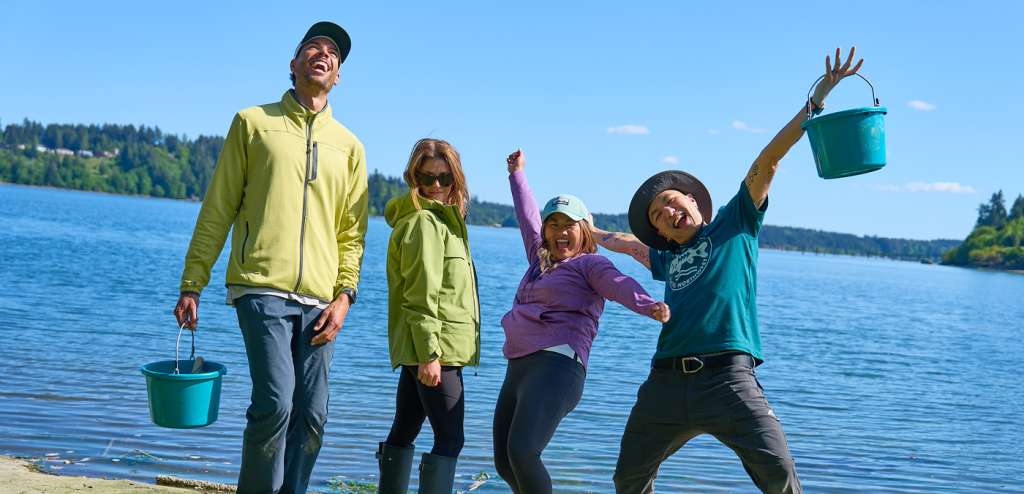
Between plucking oysters off the shore and raking the sand for barely buried clams, we spent some time asking John and Langdon about their relationship with shellfishing. We covered everything from what equipment a novice needs to get started (not much!) to their favorite ways to eat oysters (on a New Orleans-style po’ boy sandwich). Their answers ranged from the simple to the profound and we hope they inspire you to try out this easy, fun and delicious way of getting outside!
Why Try Shellfishing?
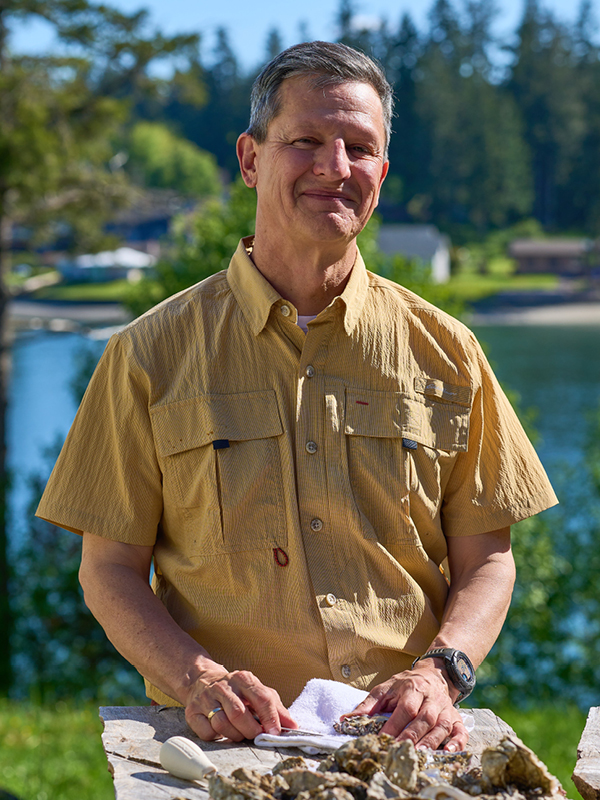
First off, we wanted to understand the draw of oystering and clamming. John, who grew up on the land that would become his farm, has been shellfishing since 1976 and still loves the peaceful calm that comes with it. According to him, spending the day gathering sustainable food at the beach allows “your mind and brain to settle and accept the overall aura of the place.”
He also appreciates the people and camaraderie that come along with the experience. “I love standing around a grill with people,” John says. “Grilling oysters, beer in your hand—that’s a totally different sense of community than sitting down around a dinner table.”
For Langdon, who loves food and has always enjoyed spending time outdoors, the appeal lies in the satisfaction of foraging for his food. “When you’re 25 miles from a trailhead,” he says, “it’s really nice to be able to find some fresh, wild ingredients to kind of supplement the astronaut food that you typically take with you on a long excursion.”
Langdon also enjoys the sense of connection with nature and heritage that comes with shellfishing. For him, it’s nice to disconnect from the modern world, “get back to your natural habitat, and go find something that maybe your grandparents knew a bit about.”
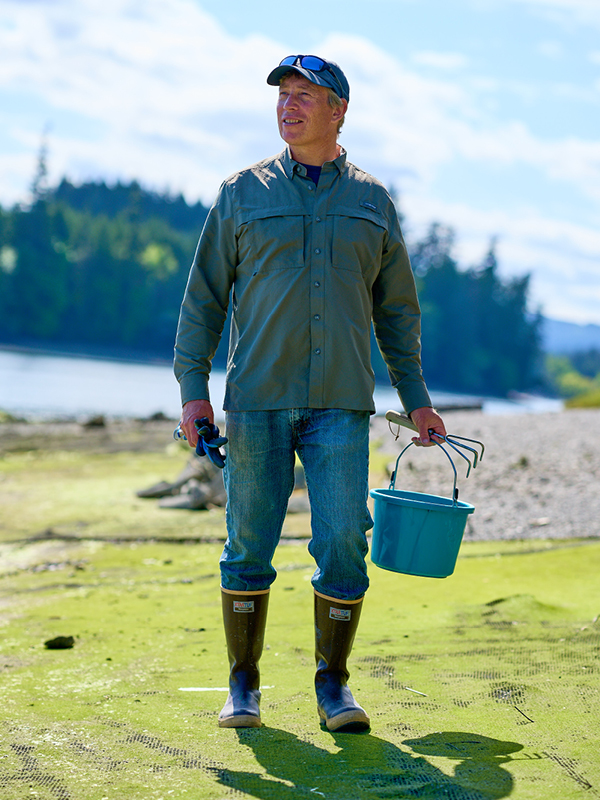
As the owner of the beach, John also appreciates that sense of history and connection to the land. “People have lived on this property and have had relationships with the shoreline and the food it brings for hundreds of years.”
What Equipment Do You Need to Go Shellfishing?
One of the best parts about getting started shellfishing is that it requires minimal gear, and many of the essentials are items you may already have at home. According to our experts, you’ll need some basics like:
- A five-gallon bucket or large bowl of ice to keep your harvest cool during transport
- Thick gloves to protect your hands while shucking oysters and digging in rocky sand
- A small, sharp knife for shucking
- A small garden cultivator rake to unearth clams a couple inches below the surface
- A rigid clam gauge to measure your harvest (some states may require; more on harvesting rules below)
Beyond those basics, it’s important to dress appropriately for the weather. According to John, smart layering is the name of the game. “If you’re able to be outdoors for hours in a warm and comfortable state,” he says, “then you’re going to be ready to accept the experiences coming to you.”
Make sure to bring a good baselayer to trap heat next to your skin and move sweat away from your body, a midlayer for extra warmth and a waterproof shell to keep you dry. Check out the layering recommendations our Eddie Bauer Associates here.
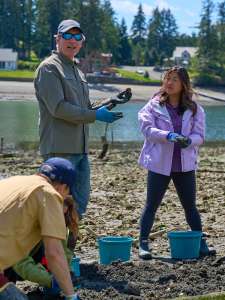
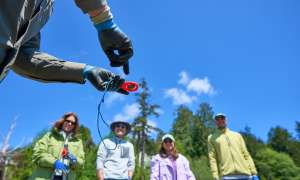
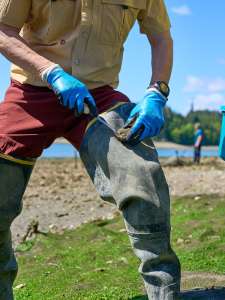
What About Rules and Regulations?
While shellfishing is a fun and easy way to get outdoors, most states have simple rules and regulations in place to ensure the practice remains sustainable and to protect public health.
Langdon recommends starting by visiting your state’s Department of Fish and Game website for information on beach closures, bag limits (the number of oysters or clams each person can harvest per day), size restrictions and other “nuts and bolts stuff.” He also notes that these websites are an “excellent source for just knowing where to go.”
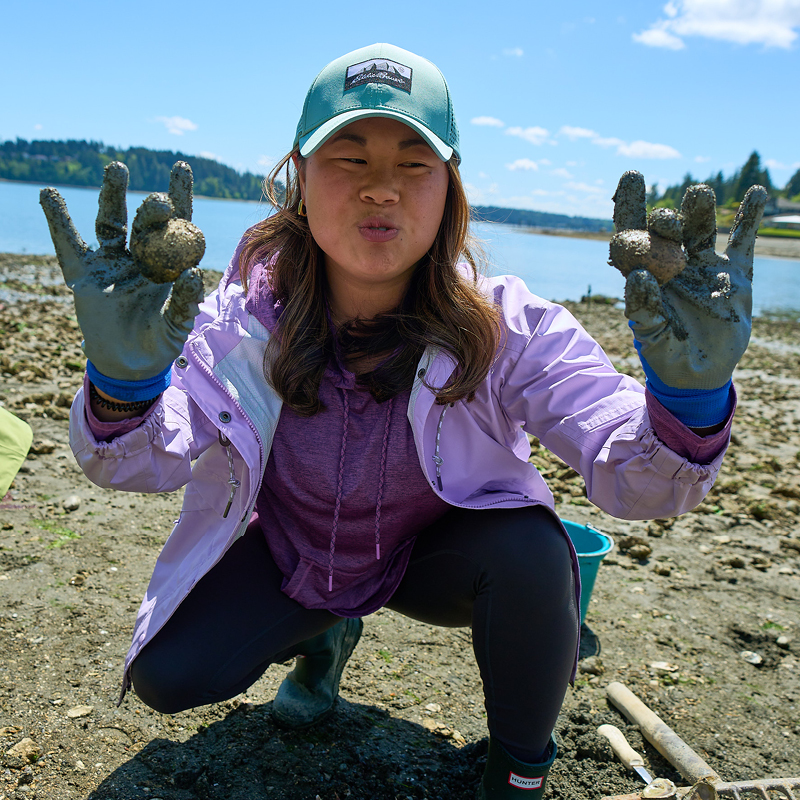
One key rule Langdon reminds us is to make sure to “leave the shells where you find them.” That’s because the babies “will set on the backs of their elders. They need that shell substrate as a place live and thrive.”
Your best bet is to shuck the oyster where you find it and leave the shell there. Luckily, John taught us how to shuck an oyster in 45 seconds, so it’s easy to keep oystering sustainable.
How Do You Find the Best Oysters and Clams?
Once we were hooked on oystering, we asked our experts how to pick the tastiest specimens. Several factors go into it, Langdon says. First off, look for oysters with a “deep cup.” Oysters should look “sort of pregnant,” with a bit of a bulge in the shell.
Langdon says that means there’s going to be nice oyster meat in there and a lot of what’s called the “liquor” surrounding it. That liquor—the environment that oysters carry in their shell—is filled with umami and other good stuff.
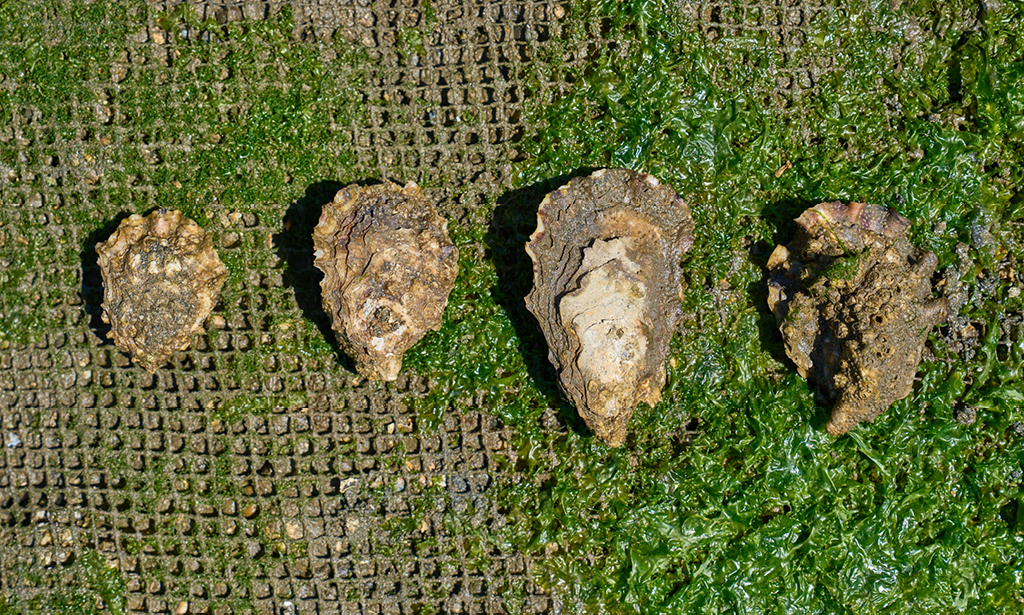
Size is also a consideration. If you’re looking to eat it raw, aim for an oyster that’s not too big, a “gagger” as Langdon calls it. For barbecuing oysters, aim on the larger side.
You know you’ve got a good oyster when it looks slightly opaque and cream-colored—as opposed to translucent and sort of thin. Then, Langdon says, you know have “a nice fatty oyster with lots of good flavor.”
When it comes to finding clams, look for small indentations in the sand, known as the clam’s show. Once you locate a show, grab your rake and dig up the clam. Most small clams, like Washington’s Manilas and Littlenecks, should be just a few inches below the surface, making them especially good for kids to help unearth.
Langdon’s advice for keeping your harvest fresh starts on the beach. Once you’ve gathered your shellfish, put them on ice for the ride home, then wrap them in a cold, damp kitchen towel in the fridge. They’ll keep them for up to three days, but will taste best in the first couple of days.
How Do I Eat Shellfish?
Now for the best part! Whether you prefer to shoot back your oysters right there on the beach or spend the time to prepare a rich, garlicky pasta alle vongole, you’re in for a treat.
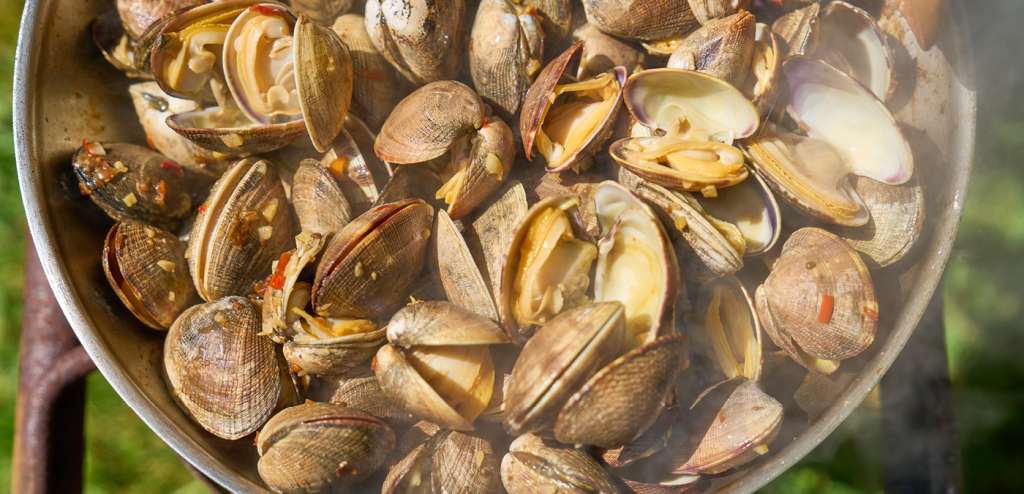
Langdon has no shortage of advice for how to prepare your harvest, but luckily for us he narrowed it down to two, show-stopping recipes: Spicy Thai Basil Clams and Clams with Chorizo and Yellow Pepper. Both are spectacular.
Now all that’s left is to grab some friends and head to the beach. Happy shellfishing!

